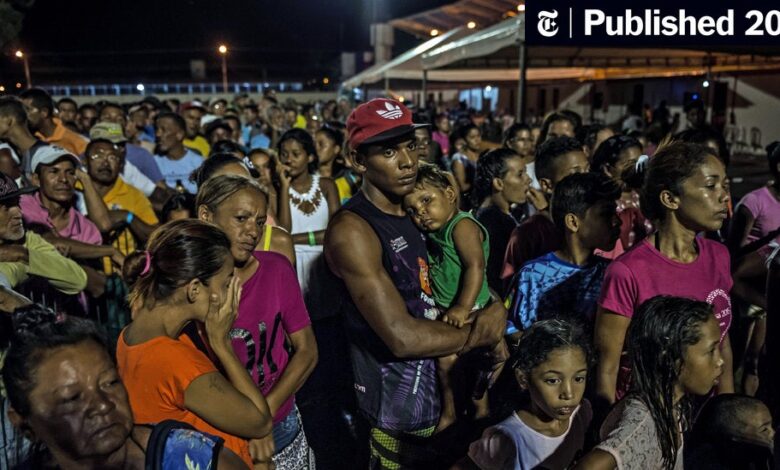Compassion in Action: Humanizing Politics and Inspiring Global Change

The spirit of this task can also be applied to tracing the stories of the Syrian or Venezuelan exodus, from noting their migration patterns to evaluating their challenges of assimilation and acculturation. In fact, The Times has numerous resources that detail the global displacement of people, dispel myths of mass migration and examine their relationship to global warming.
Compassion Mapping the Issue
Compassion mapping this issue can be conceptualized literally and figuratively, and students do so in a variety of ways. Here are a few examples:
• Reflection: At this stage, students are not as inclined to feel pity, or even sympathy or empathy, as much as they are inclined to want to disrupt the crisis. They point out what a compassionate response (or lack thereof) might look like at each level — from a passer-by to a doctor to an Immigration and Customs Enforcement agent to a politician to a researcher. As they do so, they discover a newfound conceptualization of compassion: Compassion ought to be attentive to the needs of the most vulnerable. This requires those who want to help to see the faces and listen to the stories of those most affected, and then craft an action plan that is attuned to their needs at varying levels of analysis.
• Storytelling: This can take a few forms. It might look like a cartographic representation that prompts students to symbolize geographic features and data. Students have also produced their own podcast episodes that capture the trials and tribulations immigrants face to help audiences better understand their grueling journeys.
• Action and Analysis: Compassion mapping can also function as an overlay to the global politics levels of analysis — the individual, local, community, national and the international system — that seeks to understand highly complex problems by also integrating an action-orientation mind-set that involves working alongside and supporting the most vulnerable among us. For example, to conduct and analyze their own compassionate actions, students selected or adapted an example from an editorial by The Times, “Children Shouldn’t Be Dying at the Border. Here’s How You Can Help.” Then, they wrote a reflection on their action.
Continuing the Conversation
If time allows, we continue the conversation with a fishbowl discussion, in which a group of students are chosen to discuss a given topic by picking one from a bowl while the rest of the class watches, listens and takes notes of the discussion. Topics include:
• Define and reflect upon the following terms: asylum-seeker, refugee, immigrant, migrant, expatriate. When do we use the terms and what do these terms suggest, not only about the law and public policy, but positions of power?
Source link

